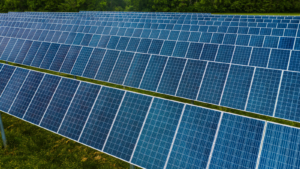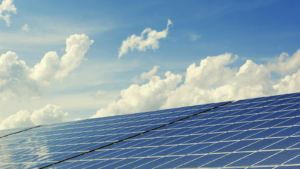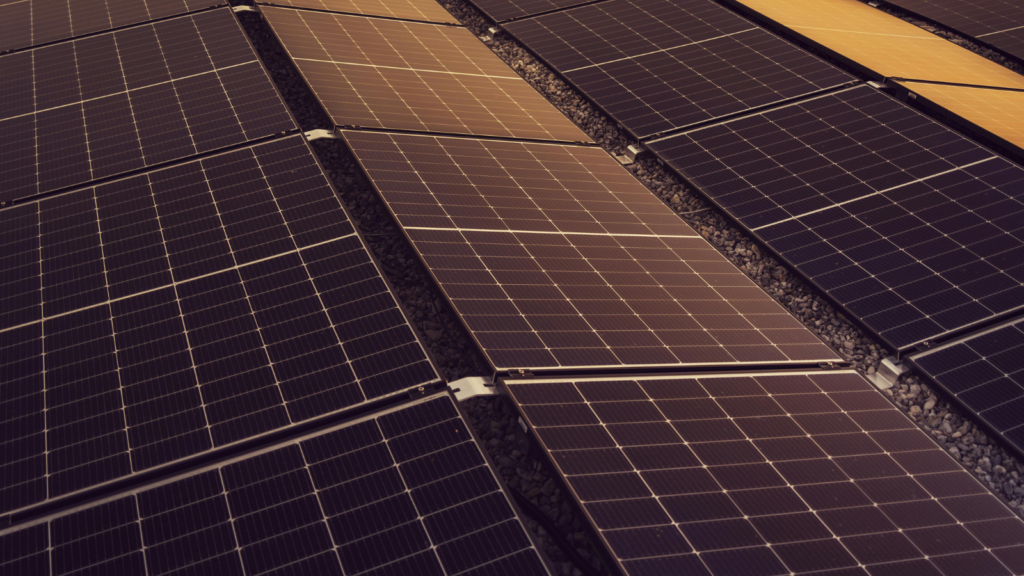”
Key Takeaways
- Direct AC Conversion: AC solar panels convert sunlight into alternating current directly, eliminating the need for separate inverters and enhancing energy efficiency.
- Simplified Installation: Their design allows for easy connection to existing electrical systems, streamlining the installation process and reducing labor costs.
- Enhanced Performance: AC solar panels maintain high efficiency even in shaded conditions due to the use of microinverters, resulting in better overall energy production.
- Lower Maintenance Requirements: With fewer components involved, AC solar panels typically incur lower maintenance costs and reduced potential failure points over their lifespan.
- Cost Savings: Homeowners and businesses can expect reduced electricity bills and a quicker return on investment, thanks to the efficient design of AC solar systems.
- Sustainability Focus: By minimizing reliance on the grid, AC solar panels promote energy independence and support the transition to sustainable energy sources.
As the world shifts toward sustainable energy solutions, AC solar panels are emerging as a game-changer in residential and commercial power systems. Unlike traditional DC solar panels, these innovative panels convert sunlight directly into alternating current, making them ideal for immediate use in homes and businesses. This technology not only simplifies installation but also enhances energy efficiency, allowing users to harness solar power more effectively.
With the rising demand for renewable energy sources, understanding the benefits and functionalities of AC solar panels is crucial. They offer a seamless integration with existing electrical systems, reducing reliance on the grid and lowering electricity bills. As the solar market continues to evolve, AC solar panels represent a significant step forward in making solar energy accessible and practical for everyone.
AC Solar Panels
AC solar panels have revolutionized the solar energy landscape. These panels generate alternating current (AC) directly, eliminating the need for an inverter, which is typically required for traditional direct current (DC) solar panels. The integration of microinverters in AC panels converts the generated DC to AC on-site, offering immediate energy use without additional conversion steps.
Key advantages of AC solar panels include:
- Ease of Installation: AC solar panels connect easily to existing electrical systems, streamlining the setup process.
- Enhanced Energy Efficiency: The direct conversion to AC minimizes energy loss during the conversion process, optimizing energy output.
- Reduced Maintenance Costs: AC solar panels typically require less maintenance due to fewer components involved in the energy conversion process.
The impact on energy consumption is significant, as homeowners and businesses benefit from lower electricity bills and increased energy independence. By reducing reliance on the grid, AC solar panels pave the way for a more sustainable future, positioning themselves as a practical choice for those seeking efficient solar solutions.
Benefits of AC Solar Panels
AC solar panels offer numerous advantages contributing to energy efficiency and cost savings. Their innovative design not only enhances performance but also optimizes the overall solar power experience for users.
Efficiency and Performance

AC solar panels excel in energy efficiency through direct sunlight conversion into alternating current. This process reduces energy loss typically associated with DC systems during conversion. AC panels accommodate power distribution without requiring inverters for immediate energy use, ensuring maximum performance. Their integrated microinverters enhance energy harvesting, allowing for optimized output even in partial shade conditions. The enhanced design promotes more consistent energy production, resulting in an overall improvement in performance metrics.
Cost-Effectiveness
AC solar panels present significant cost-effective solutions for consumers. Their streamlined installation process decreases labor costs and time requirements. Fewer components, like inverters, lead to lower maintenance costs over the panel’s lifespan. Homeowners and businesses benefit from reduced reliance on the grid, further decreasing utility expenses. Many consumers report noticeable savings on monthly electricity bills due to the efficient design of AC systems, which leads to a faster return on investment.
How AC Solar Panels Work
AC solar panels utilize advanced technology to convert sunlight into usable energy efficiently. Their design includes a seamless integration of components that streamlines energy production and consumption.
Conversion Process
AC solar panels employ microinverters that convert direct current (DC) generated by solar cells into alternating current (AC) instantly. This process eliminates the need for a separate inverter system. As sunlight hits the panels, the microinverters optimize energy conversion, maintaining peak efficiency. This real-time conversion minimizes energy loss, ensuring maximum utilization of solar power, even during fluctuating weather conditions.
Key Components
Key components of AC solar panels include solar cells, microinverters, and the panel framework.
- Solar Cells: These are made from photovoltaic materials, typically silicon, that capture sunlight and generate DC electricity.
- Microinverters: Each solar panel has its own microinverter responsible for converting DC to AC. This decentralized approach enhances performance by ensuring that each panel operates independently.
- Panel Framework: The protective housing for solar cells and microinverters, designed to withstand environmental factors while maximizing exposure to sunlight.
Each component works together to optimize energy efficiency, enhance output, and simplify installation processes, making AC solar panels a practical choice for energy generation.
Comparison with DC Solar Panels
AC solar panels present notable distinctions when compared to traditional DC solar panels. Their design and functionality deliver specific advantages that enhance energy production and user convenience.
Efficiency Differences
AC solar panels utilize microinverters to convert direct current (DC) into alternating current (AC) immediately. This configuration minimizes energy loss during conversion, leading to higher overall efficiency than DC systems. DC solar panels typically require a central inverter, which can create conversion losses, especially under partial shading conditions. By enabling each panel to operate independently, AC panels maintain efficient performance regardless of surrounding panel conditions, ensuring optimal energy capture. Studies show that AC systems can achieve efficiency gains of 15-20% over their DC counterparts in diverse installation scenarios.
Installation and Maintenance

AC solar panels feature a streamlined installation process due to their integrated microinverter technology, eliminating the need for a separate inverter unit. This simplicity reduces labor time and associated costs. Installation involves mounting individual panels and connecting them to existing electrical systems, facilitating quicker deployment. Maintenance is also less intensive, as fewer components result in lower potential failure points. With less wiring and no central inverter, AC panels often exhibit lower long-term maintenance costs. Industry reports indicate a decrease in maintenance interventions by up to 30% compared to conventional DC installations, making AC solar panels a more user-friendly option for homeowners and businesses alike.
Conclusion
AC solar panels represent a significant leap forward in solar technology. Their ability to convert sunlight into usable energy efficiently makes them an attractive option for both homeowners and businesses. With streamlined installation processes and reduced maintenance needs, they not only lower electricity costs but also enhance energy independence.
The integration of microinverters ensures optimal performance even under challenging conditions. As the demand for sustainable energy solutions grows, AC solar panels are poised to play a crucial role in shaping a more energy-efficient future. Embracing this technology can lead to substantial savings and a more eco-friendly lifestyle.
“

